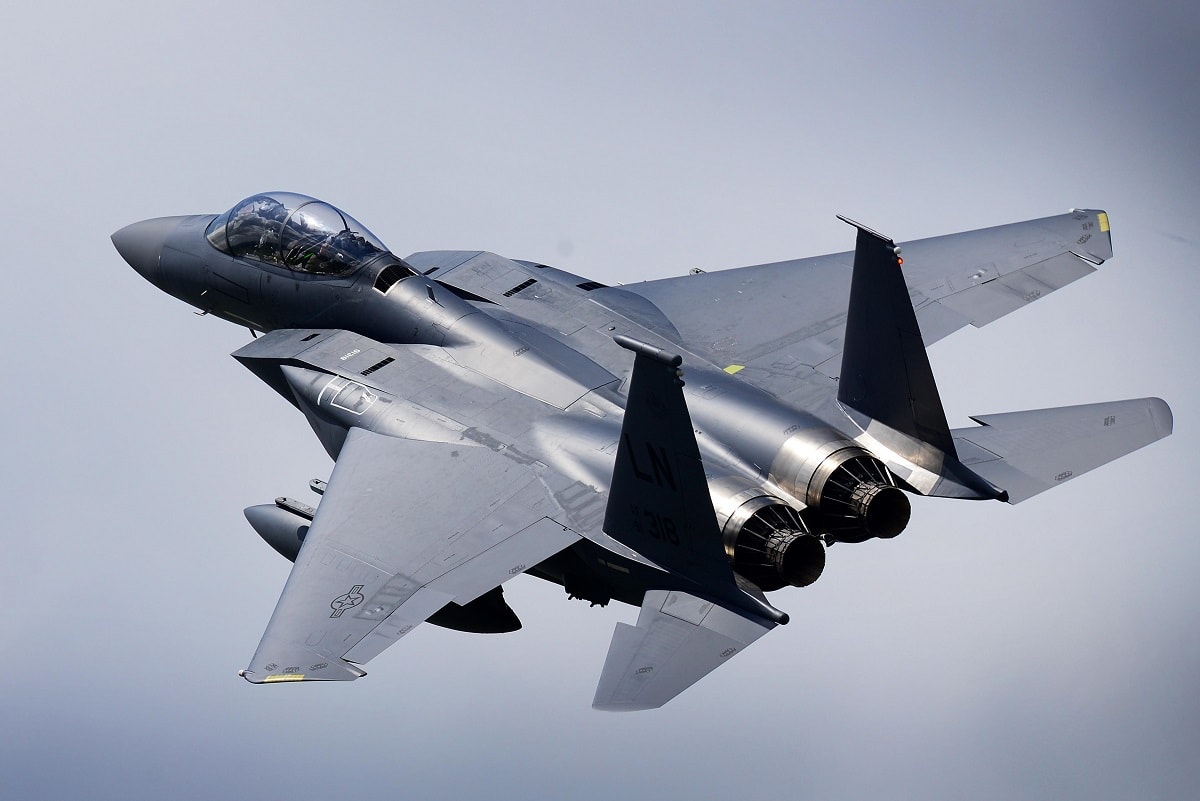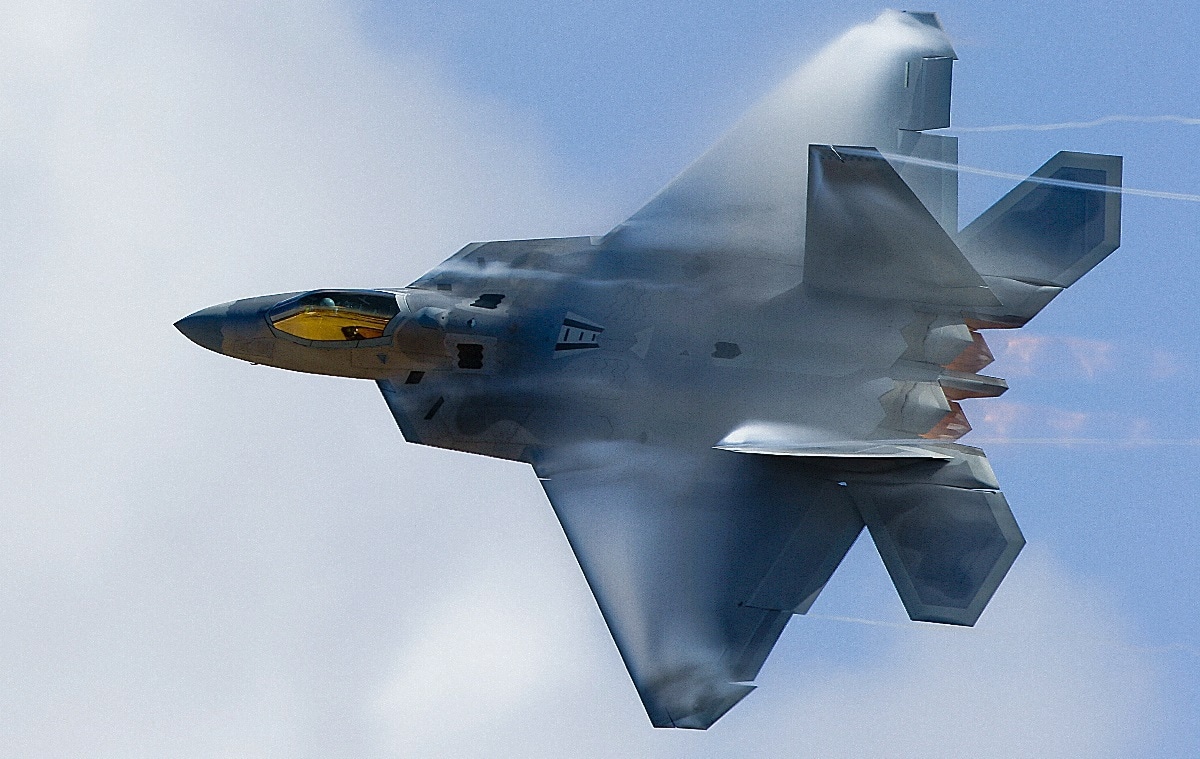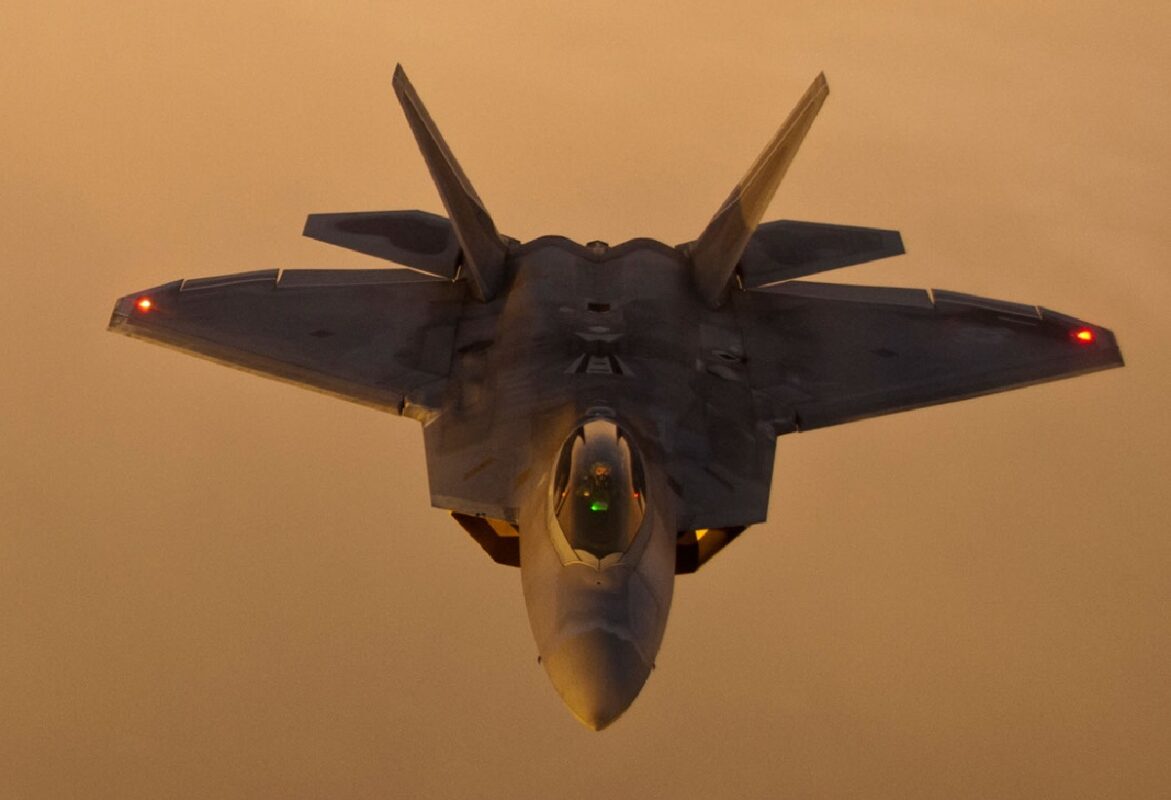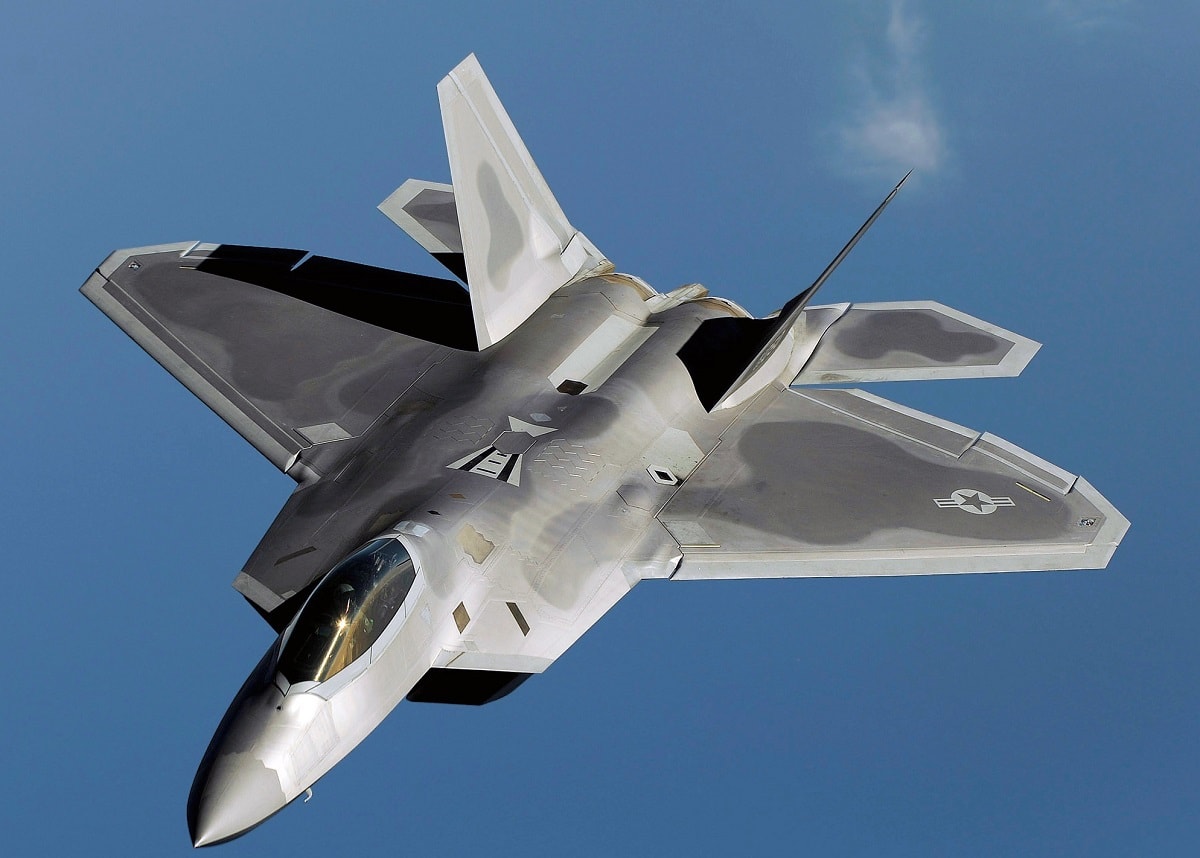F-22 vs. F-15 in Alaska: Is dogfighting still a thing? The U.S. Air Force thinks it is essential that the service branch train Air National Guard units to sharpen their skills in aerial combat. You may not know that Air Force reserve units can be just as crucial as the active-duty forces during warfare. While this training has similarities to the Navy’s Top Gun program, the Air Force prefers you to follow fighter pilot exploits at the Air Force Weapons School at Nellis Air Force Base, Nevada for the latest in dogfighting instruction.
Here We Go: The F-15 Against the F-22
To bring this aerial combat training to the reserve component, in April the Air Force deployed F-15s from the California Air National Guard’s 144th Fighter Wing to train with F-22s from the 3rd Wing’s 90th and 525th fighter squadrons at Joint Base Elmendorf-Richardson, Alaska.
The Air Force calls these drills “Dissimilar Aircraft Combat Training” and “Fighter Integration.” The pilots have a blast when they “win” in these head-to-head situations.
Aviators Were Pumped Up
“I got to fight the F-22 – a serious jet with some serious close-in maneuvering capabilities,” said Captain Charles Jaimeson, 194th Fighter Squadron pilot. “They can fight fast. They can fight slow. They have proficient, well-trained pilots up here that impressed me, but the Eagle still has some good moves that we like to show to their new guys,” according to an Air Force news release.
All Eyes on East Asia
The pairing is interesting because it shows the Air Force is exhibiting an awareness of operational art and strategic foresight for the Indo-Pacific Region. This means they are looking ahead to prepare the F-22s for service in East Asia if needed, perhaps if aerial combat ever happens with China. If the F-22s were deployed, the Air Guard’s 144th Fighter Wing F-15s would fill in for the Raptors.
So why not do some joint training in the meantime? The detachment commander from the Air Guard explains that the reserve component is up to the challenge.
“The goals of this mission were twofold: to validate the alert mission in order to free up Raptors’ squadrons to deploy (if needed) to PACAF (Pacific Air Forces). And also, for fighter integration among our fourth-generation and fifth-generation aircraft,” said Lt. Col. Jon Vanbragt.
Competition Improves Skills
The airplanes served as both aggressors and defenders and went up one-on-one against each other. The F-15 pilots received experience in flying against stealth airplanes. The F-22 aviators received a taste of the F-15’s maneuverability.
Which airplane “won” the most? The Air Force didn’t say, but you can bet the competition was intense.
Maintenance Crews Get a Taste
Airplane crews were subjected to the rigors of simulated combat as well. Avionics techs were on their toes as well as other specialists needed to keep the fighters in the air.

Image: Creative Commons.
Everybody Is on the Same Team Afterall
Air Force brass wants these warplanes to fight together. That’s why there is also the joint training exercise called “Checkered Flag 22-2” that brings together F-22s and F-15s to integrate with F-16s and F-35s. Everybody is on the same team of course at Tyndall Air Force Base, Florida during these drills.
This training costs money and resources but the Air Force believes it is worth it to make sure pilots and crews maintain their sharp edge. It’s good that the Air Guard aviators are getting some seasoning too. They have every right to hold their heads up high even though they sometimes fly older fighters. The next-generation airplane pilots can also get needed training to see if they match up well with fourth-generation warplanes.

An F-22 Raptor aircraft performs a high-speed bank at the Marine Corps Community Services-sponsored annual air show Oct. 3, 2008, at Marine Corps Air Station Miramar, San Diego. (U.S. Marine Corps photo by Lance Cpl. Dan T. Le/Released)

F-22 Raptors from Tyndall Air Force Base, Fla. fly in formation behind a KC-135 Stratotanker from Altus Air Force Base, Okla. after air refueling over New York, Aug. 21, 2012. (U.S. Air Force photo/Airman 1st Class Kenneth W. Norman)
“The most value comes from understanding what the modern battlefield looks like from a stealth perspective,” said Vanbragt. “Despite flying different platforms, it’s been an enriching experience for everyone.”
Now serving as 1945’s Defense and National Security Editor, Brent M. Eastwood, PhD, is the author of Humans, Machines, and Data: Future Trends in Warfare. He is an Emerging Threats expert and former U.S. Army Infantry officer. You can follow him on Twitter @BMEastwood.

